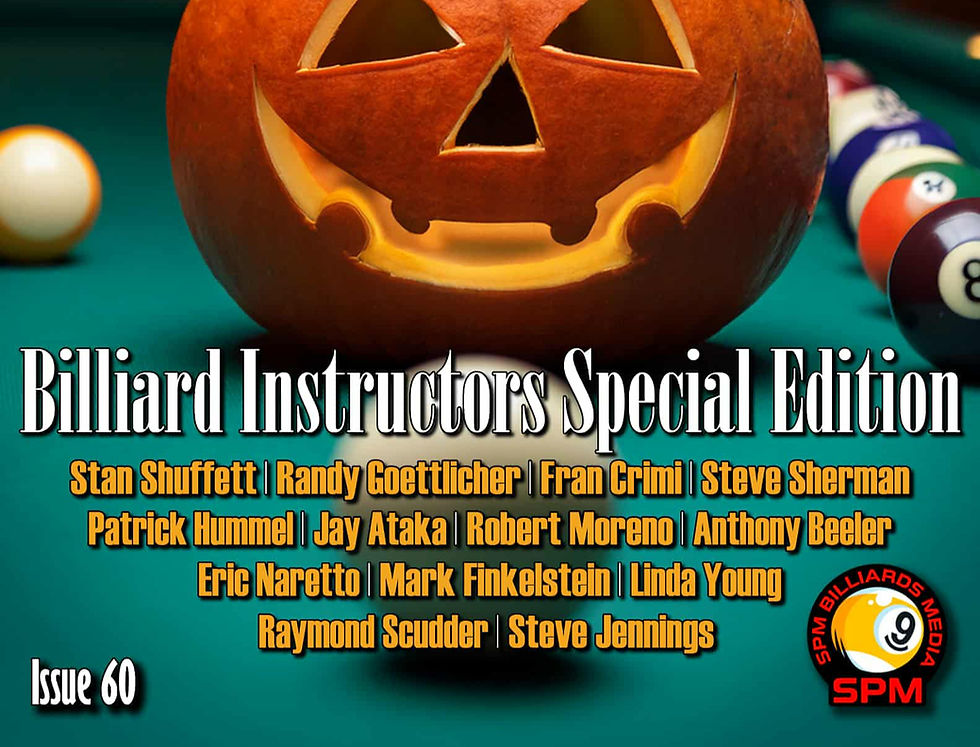My Game with David Rice: Mr. Roboto. ~ Anthony Beeler
- sneakypetemafia1
- Sep 16, 2014
- 3 min read
A cold breeze and the drizzle of rain marked a cold November afternoon back in 1997.
Shadowman’s Billiard Parlor in Campbellsville, Kentucky, was the setting for the area’s monthly 9-ball tournament. The field was star studded. Players like David Rice, Mike Blevins, and John Brumback, were all regulars in quest for the monthly title.
As the tournament progressed, David Rice and I were pitted against one another in the finals. David was an incredibly difficult player to beat and always demonstrated sound pool mechanics.
Local player, Eddie Adams once said, “Look at David, he is just like a robot. He does everything over and over perfectly!” In fact, it was Eddie that coined David the nickname “Mr. Roboto.” During my match with David, I paid close attention to his stroke in an attempt to learn something that might help my game.
I noticed as David approached each ball he would always aim from a standing position then settle into his stance.
Aiming while standing seemed to be the first checkpoint before each shot. Next, he would take several slow warm-up strokes to ensure aim (second checkpoint), and then move into what many refer to as, “The Firing Order.” The first part of “The Firing Order” is called “Set” (third aiming checkpoint). This is where you stop your cue tip 1/4 to 1/8 of an inch away from the cue ball and take one final look.

Set
You should note that it takes the human eye three seconds to focus on a target from a still position. Therefore, it is imperative that you come to a complete stop to zero in on the intended target. You will want to note that your eyes should be focusing on the cue ball at the end of the “Set” position.
The next thing David would do is move into what many instructors refer to as “Pause.” This is where he would slowly pull back the cue and stop at the end of his backswing. When making the transition from “Set” to “Pause” always remember that your eyes should move from the cue ball to the target.

Pause
A good pause helps remove a jerky forward swing and should help you maintain accuracy. The third part of David’s stoke is commonly referred to as “Finish.” During “Finish” he would smoothly accelerate his cue to strike and follow through the cue ball. Always remember to keep your eyes on the intended target during this phase.

Finish
The final part of David’s stroke was another stop known as “Freeze.” During “Freeze” it’s important to keep your body, head, and cue still. This is the evaluative part of the stroke. It is here that if the shot is missed, you should try to diagnose what went wrong.
While practicing the elements of a good pool stroke many instructors will teach you to say “Set, Pause, Finish, Freeze” out loud to internalize each part. However, it is now my belief that each part of the stroke should be substituted with counting. In other words, instead of saying, “Set” you should say “1… 2… 3…” (first stop). Then pull back to “Pause” and say “1… 2…” (second stop) and then “Finish” with “1… 2… 3… 4…” (third stop).
Always remember never to count during a match.
You should practice the parts of your stroke so that they become a natural part of your game. They should become something that you don’t have to think about. I am happy to say that I was lucky enough to win the pool tournament against David that day, but the real victory wasn’t the 9-ball championship.
I learned something much more valuable. I witnessed the parts of a good pool stroke in action, and I had the opportunity to dissect them in a real game situation.
Always remember, if you want to play like a robot incorporate “Set, Pause, Finish, Freeze” and you will play less like a human and more like a machine.
Anthony Beeler is a 2013 BCA National 9-Ball team champion. He also finished 9th out of 1086 players in the 2013 BCA National 8-Ball Championships. He is a certified Level 3 instructor for the American CueSports Alliance and is the founder of Maximize Your Potential Billiards Academy located in Bradfordsville, Kentucky. Beeler is also a fully licensed Kentucky Educator having, received his bachelor’s degree at Campbellsville University and his master’s degree in Education Leadership at Eastern Kentucky University. Throughout his pool-playing career Anthony has won over 300 tournaments and has defeated numerous professional players in tournament competition.
Photo: Linus Bohman/Flickr Editor: Dana Gornall










Comments